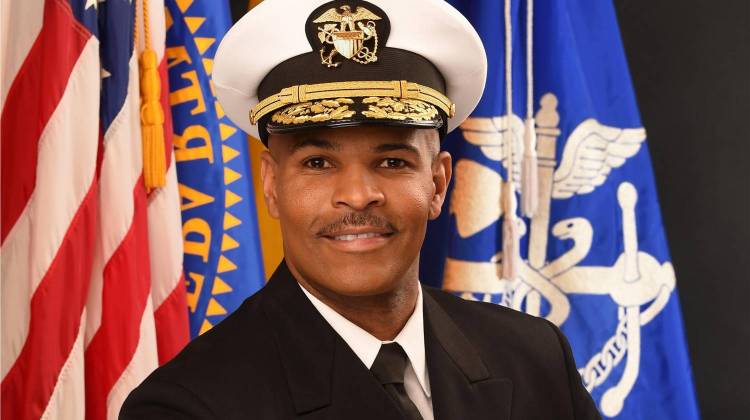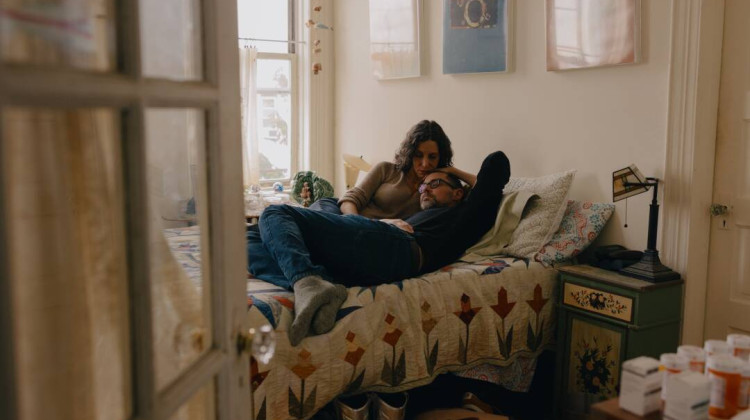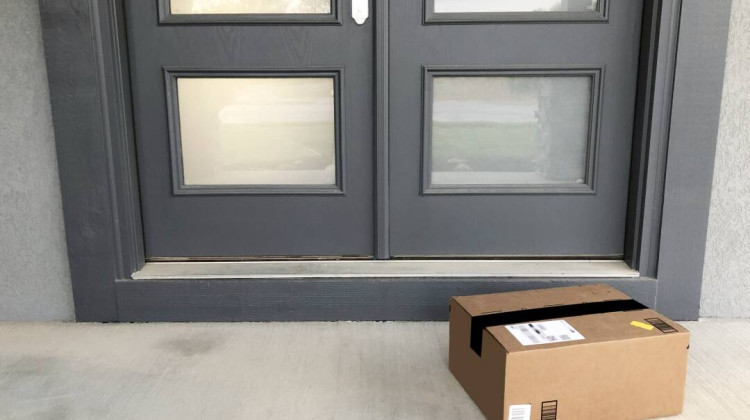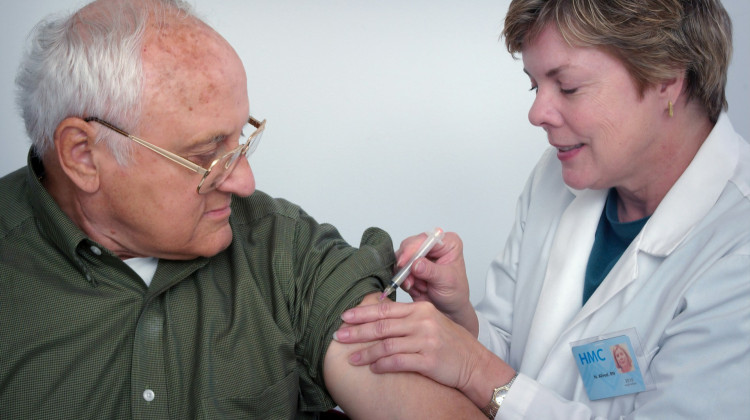U.S. Surgeon General Jerome Adams, the former Indiana State Health Commissioner, is urging more people to carry the opioid overdose antidote naloxone.
As NPR reports, Adams issued the advisory Thursday.
“The call to action is to recognize if you’re at risk,” he tells Morning Edition‘s Rachel Martin. “And if you or a loved one are at risk, keep within reach, know how to use naloxone.”
As Indiana’s top health official for three years, Adams championed harm reduction methods in response to the opioid crisis. As Side Effects Public Media reports, Adams is best known for his response to an unprecedented HIV outbreak in rural Scott County related to intravenous drug use:
A practicing anesthesiologist, Adams was appointed Indiana Health Commissioner in October 2014. Four months later, the state announced an HIV outbreak after documenting 26 cases of HIV. By May of that year, the Indiana State Department of Health confirmed 158 cases of HIV, spread almost entirely through injection drug use. 88 percent of those cases were also infected with hepatitis C.
Public health experts credit Adams with persuading then Governor Mike Pence to allow Indiana counties to create syringe exchanges to contain the spread of the disease.
Speaking to Morning Edition on Thursday, Adams addressed concerns that the cost of naloxone has risen sharply in recent years.
Here are interview highlights that have been edited for length and clarity.
On keeping naloxone at home, and using it effectively
We should think of naloxone like an EpiPen or CPR. Unfortunately, over half of the overdoses that are occurring are occurring in homes, so we want everyone to be armed to respond.
We’re working with pharmacies, providers and medical associations to increase training on how to administer naloxone in homes. But overall — and I’m an anesthesiologist who’s administered naloxone many times myself — it’s very safe, easy to use, and 49 of 50 states have standing orders for people to be able to access and to use [naloxone] in the home setting.
On making sure someone treated with naloxone doesn’t overdose again in short order
When a person is having multiple overdoses, I see that as a system failure. We know addiction is a chronic disease, much like diabetes or hypertension, and we need to treat it the same way. We can’t have someone overdose and send them back out onto the streets at 2 a.m., because they’re going to run right back into the hands of the local drug dealer.
If you come in at 3 a.m., having been resuscitated from an overdose, we need to have either an immediate access to treatment available for you, or, what’s working well in many places is a peer recovery coach — someone who’s been through this before and who can speak to you in a language that will resonate, and basically can be with you until you’re in recovery. Those are the kind of systemic changes we need to make sure naloxone is a touch point that leads to recovery.
On pricing and availability of naloxone
President Trump has asked for, and Congress has approved, $6 billion in funding to respond to the opioid epidemic. There are different grants available for states to purchase naloxone, which they can give out for free.
We’re also working with insurers. Ninety-five percent of people with insurance coverage, including Medicare, Medicaid, Tricare and Veterans Affairs are actually able to get naloxone with little or no copay, and we’re working with them to make that copay as small as possible.
We’re also working with Adapt Pharma and Kaleo [two makers of naloxone available in the U.S.] to try to keep costs low. From an economic point of view, unfortunately, there are so many people who need naloxone that drug companies are going to make their money one way or the other.
On the role of law enforcement in combating the opioid crisis
We are not going to solve this crisis without the involvement of law enforcement. I can also tell you, from visiting many communities, that folks are concerned about public safety aspects. One neighbor is concerned their son is overdosing while another other neighbor is worried their house is getting broken into.
I’m focused on meeting with the attorneys general and meeting with local law officials and making sure that if you’re dealing drugs, you’re going to go to jail. But if you have a substance use disorder, we’re going to give you an option to get treatment, and hopefully become a productive member of society again.
On where federal funding can help
This starts with naloxone — saving lives is one of the president’s key pillars — and then using it as a bridge for treatment. Fifty-million dollars in funding has been allocated specifically for naloxone, and states are eligible for $2 billion dollars in block grants that they can use however they like.
If we can spend money on prevention and more treatment options, making sure we’re providing wrap-around services, I think we’ll find ourselves in a good place. I continue to impress upon folks the importance of partnering, making sure that law enforcement is sitting down with health and education so they all put their money together on a local level. At the end of the day, unfortunately, there will never be enough money in the federal government to do everything that we want to do.
 DONATE
DONATE










 Support WFYI. We can't do it without you.
Support WFYI. We can't do it without you.